Luzon Rails – Journal Entry #32
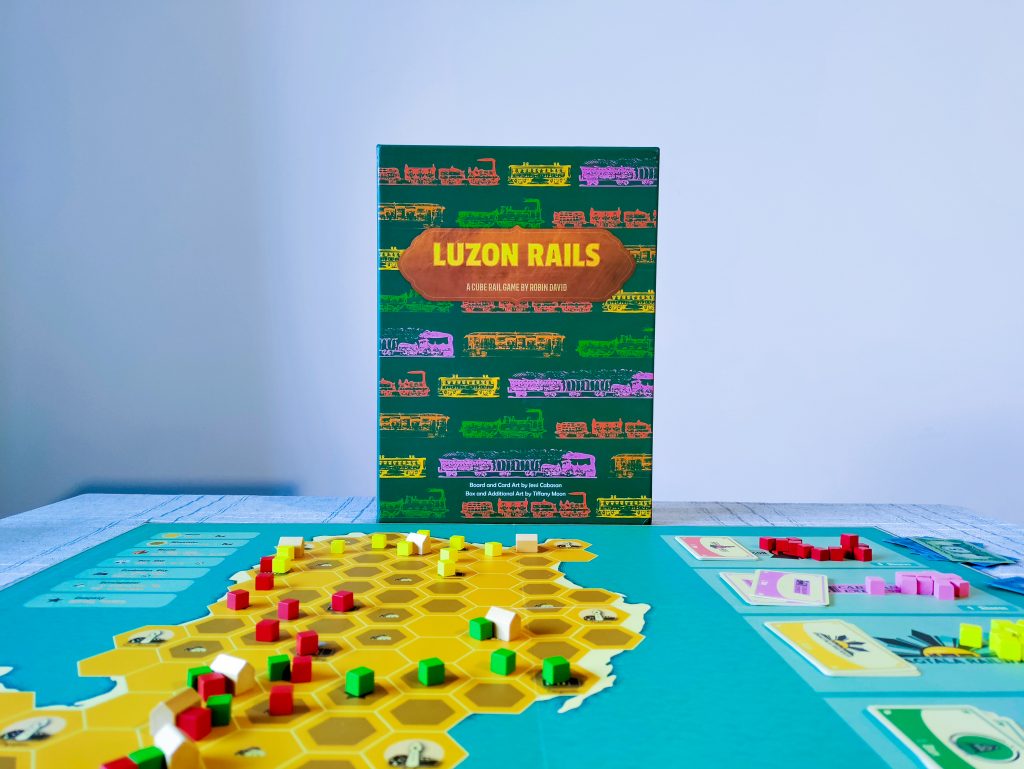
Welcome to Luzon, the largest island in the Philippines! Are your entrepreneur skills good enough to develop a profitable railway network by investing in the companies on this island? Can you outsmart your opponents and fool them to invest too much in a company and make no profit out of it? Then Luzon Rails is the game for you!
Luzon Rails is a cube rails game designed by Robin David that differs from other games in this category that I’ve played before. I was impressed by the twist on the actions available on your turn and by how different hexes on the board influence companies when connected to their network.
How to play Luzon Rails
In Luzon Rails the players compete to become one of the greatest railway investors on the island. They buy shares in companies to increase their funds and then improve them to become rich when the companies pay dividends. The players do not own these companies, they only manipulate them to gain profits. Each player will have his own portfolio of shares and as the game evolves, these portfolios will overlap and this may lead to cooperation or teasing between players.
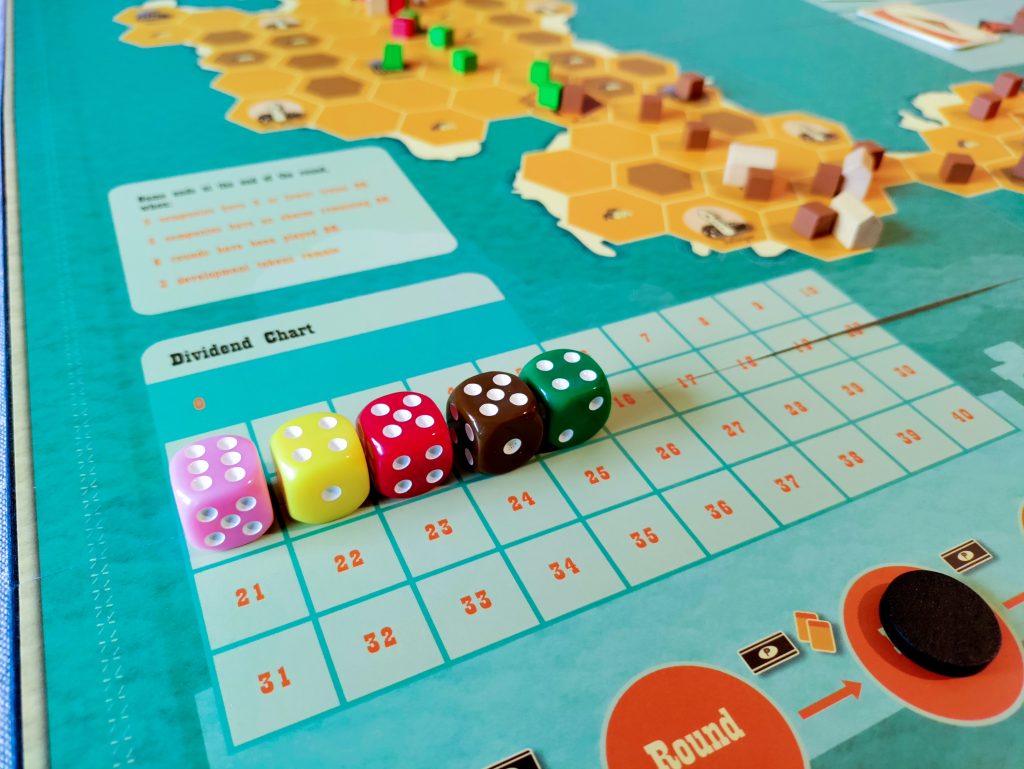
The game plays over the course of 6 rounds, or until one of the ending conditions is met. On each round, the players will take turns doing different actions such as auctioning shares, building tracks, or developing hexes. However, you don’t always have the same actions available to you on your turn, as you’d be used to from other cube rails games. In Luzon Rails, the actions that you can take on your turn depend on the cards in your hand and those on the board. On your turn, you will choose a card to play and do one of the actions displayed on it.
You will notice that besides the classic plains and mountains, there are some special hexes on the map: production cities, ports, developments, and the capital, Manila. All these hexes will give special bonuses to a company if you connect them to its track network. These bonuses include increasing the stock value, gaining funds for the company, or triggering an immediate company payout.
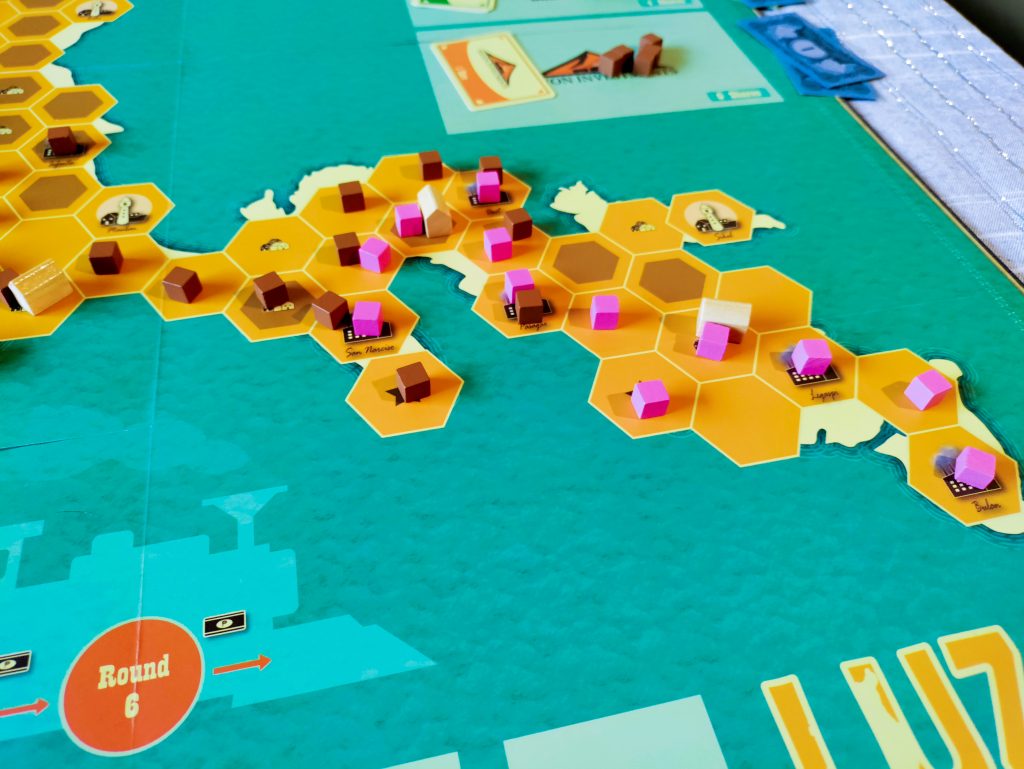
At the end of each round, each company pays dividends to the players who own shares in them. After that, the cards at the bottom of the board are restocked and a new round starts. Besides reaching the end of round 6, there are three more ways to trigger the end of the game: having three companies with no shares remaining or less than 3 track tokens, or having less than three development tokens remaining. The winner is the player who has the most money at the end of the game.
Luzon Rails, a cube rails game with a nice twist
At first, Luzon Rails reminded me of another cube rails game that is part of my collection, namely Irish Gauge. Both games share the same auction system for company shares, and the shares system works pretty similar, but there are some differences that I should note here. In both games, you buy shares and invest in different companies to get money back when dividends are paid. However, when buying shares in Irish Gauge, all the money goes to the bank, while in Luzon Rails, all that money goes directly to the company whose share you’ve bought, to be reinvested in laying tracks later in-game.
Speaking of laying tracks. Unlike in Irish Gauge where you have 3 build points each turn to place tracks on the map which neither you or the company pay for, in Luzon Rails your rail placement depends a lot on the cards available to you and on the funds of the companies. Sometimes managing a company’s funds in order to be able to expand well and make it profitable felt like a real challenge, because how much you can expand is strictly related to what people pay for its shares. Cheap shares mean low money which then means fewer cubes placed.
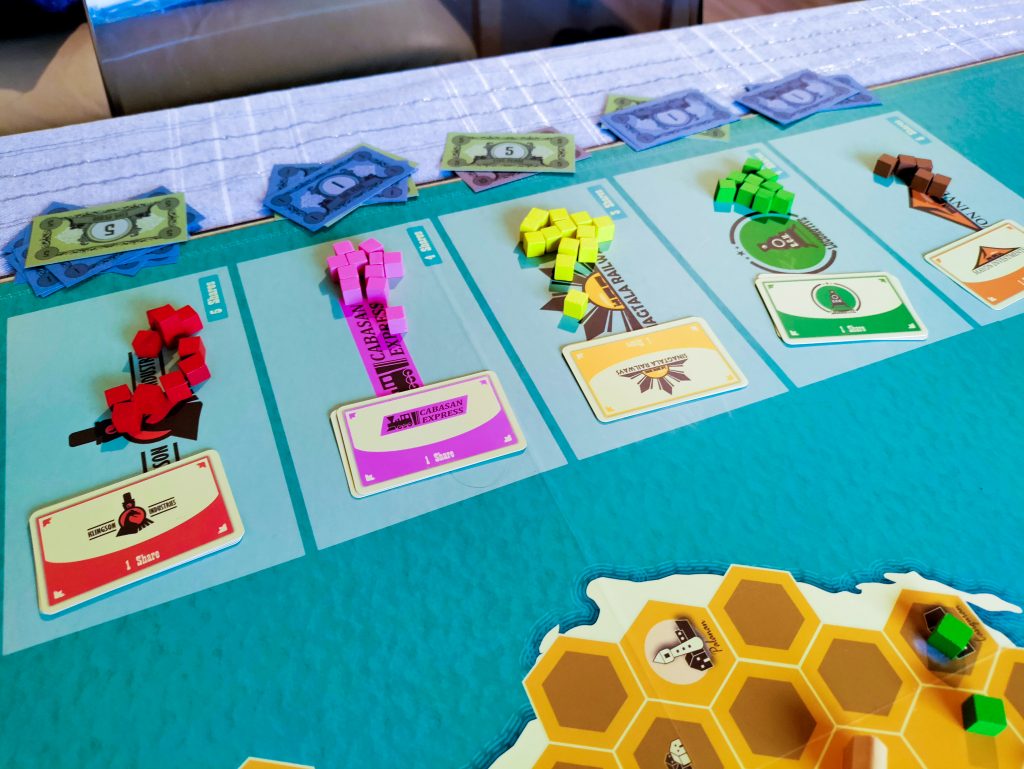
Having to choose your actions based on the cards in your hand or those that are publicly available is my favorite part of this game. This reminded me of Concordia and it is a nice twist from the usual cube rails games where you can choose from the same actions every turn because you’ll feel more and more limited in your actions the closer you get to the end of the round, so you have to weigh your decisions well.
Timing your actions well in Luzon Rails is something that you should learn as soon as possible when playing it. Knowing when to buy shares and when to lay tracks was always the key to becoming a successful train magnate. Hoarding shares from a company early game at low prices when the other players don’t have much money may sound like a good idea, but this will end up with you not being able to expand that company too much because you’ll lack the funds to do so! I did that once and I barely managed to connect 3 or 4 cities or ports before the company ran out of money. Getting cheap shares is good, but you won’t get much out of them if you can’t connect many cities using that money!
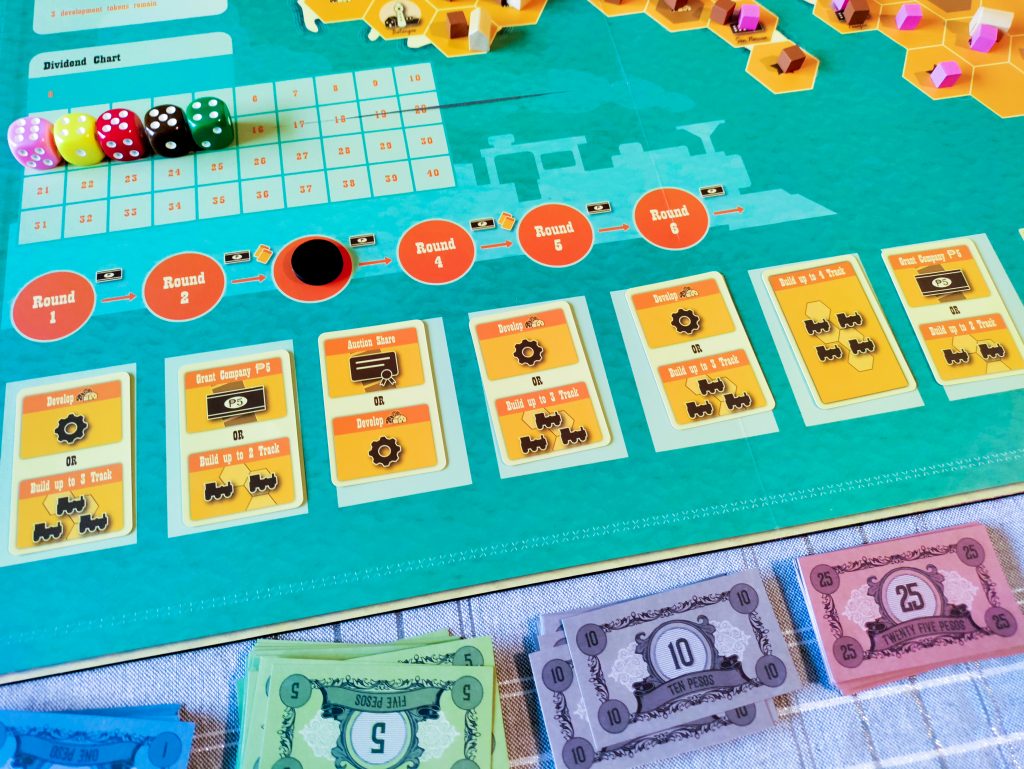
Now that I brought the special hexes into discussion, I must say that this is what first caught my attention to this game. These hexes affect the value of the shares and of the dividends paid in a very unique way and knowing when to connect each type to a company is very important to how much money you’ll earn back from a company. I found out that connecting production cities early game is very important because it increases the company’s stock value and also increases that company’s die by one pip.
Boosting a company’s die early game is useful because later in-game you’ll want to connect port cities to your network, which increase a company’s dividend value immediately by the value of its die, which can be worth a lot if the die has a 5 or a 6 showing on it. Development hexes also proved very useful for increasing a company’s dividend value when low on funds.
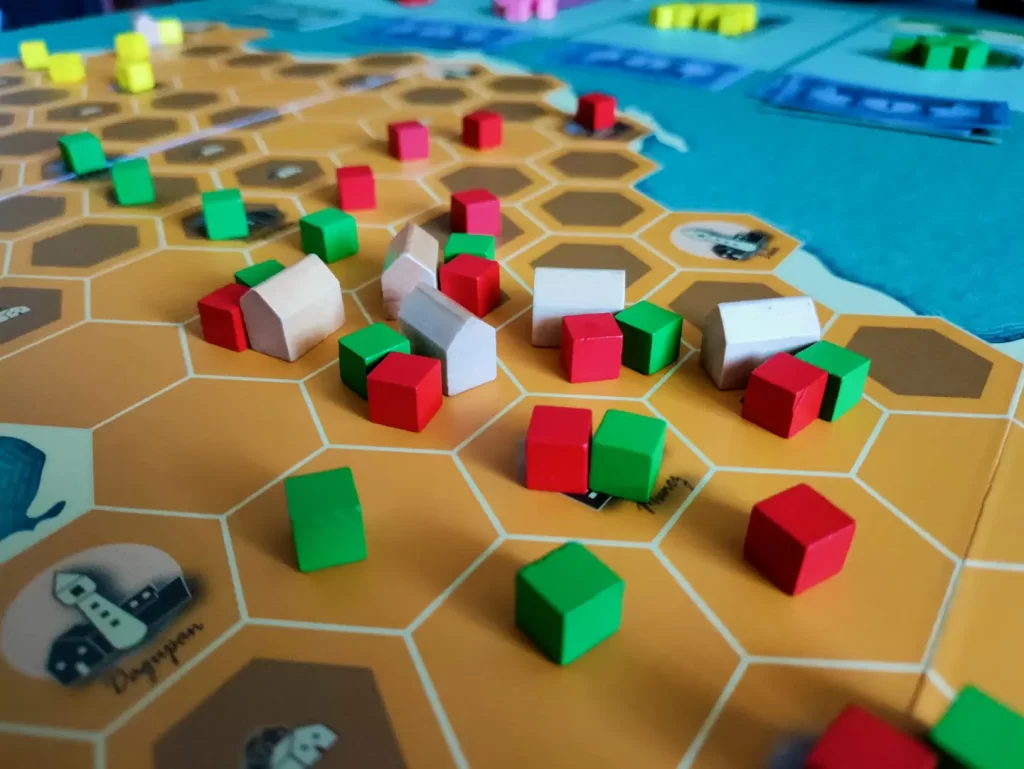
The Kickstarter edition of the game also came with the Private Companies expansion which add more variance to the game. These cards will give each company a special benefit which will apply for the rest of the game. These benefits are not game breakers, so they are a really nice addition to the game. I recommend adding them after a couple plays of the base game though, so you’ll already be used to the general flow of the game.
Conclusion
Luzon Rails was just as fun and enjoyable as I expected. The action cards and the special hexes change the classic cube rails experience in a clever way. It is a great entry-level game if you want to dive into cube rails, it plays fast, and the rules are easy to pick up. Can’t wait to put it on the table again!
Useful info
Designer: Robin David
Publisher: Self Published
Players: 3-5
Time: 60-90 min
Times played: 6
Full disclosure: A copy of Luzon Rails was provided by the game designer.
Did you like the review? Follow me on my Instagram page where I post daily photos of games I play and other things. You can also support me on Patreon to gain access to various special content, such as game unboxings, first impressions, polls to decide what games to cover next, and early access to reviews!



One Comment